Review: #42144 Material Handler
Let’s find out what a real-world Material Handler can do — and whether you should get “pumped up” about this new Pneumatic-powered LEGO set.
#42144 Material Handler is a fun and engaging set for someone who is relatively new to Technic. The instructions are mostly clear, and the techniques are interesting without feeling overly complex. The set has both mechanical and pneumatic functions which increase it’s playability, while it’s striking red color grabs your attention from across the room.
#42144 Material Handler will be released worldwide on August 1. It costs $149.99 (119.99€ / £104.99 / 199.99 CAD / 199.99 AUD) for 835 pieces, ages 10+.
At that price, the set comes to $0.18 per piece in the USA, which is genuinely atrocious across almost any product line (other than perhaps the age 4+ or DUPLO sets). I am not going to try and excuse this pricing, but will remind readers that Pneumatic components can be expensive to purchase separately. (This set includes one pump, three pneumatic cylinders, 3 switches, and an assortment of pneumatic hoses.)
First Impressions
At first glance, this set makes quite the impression. The bright red color and the positioning of the image on the box are eye-catching, and make you want to pick it up and play right away. This feeling was magnified by the fact that my three-year-old son loves everything related to heavy equipment and LEGO and was immediately excited to start building.
Yes, you read that correctly, I built this set with the help of my toddler. Yes, the set is WILDLY out of scope for a three-year-old and deserves every bit of the 10+ age rating. No, he didn’t care. He was just STOKED to be able to “help” — more on how we actually went about this to follow.
Because of my son’s undying passion for heavy machinery, I have learned a good deal about the topic over the past two years. I have read countless books, watched many YouTubes and memorized all the lyrics to all the songs from Truck Tunes, however, I had never heard of a material handler — it hadn’t come up in my extensive “research”. Thankfully, we live in the age of YouTube, and I was able to ascertain that it was not a machine made up by LEGO, but is, in fact, a very real, very cool machine. All of this added to the excitement of the build.
Tom Alphin: I reached out to Jim Gardner who writes Truck Tunes to learn more about his creative process; how he writes songs for toddlers about heavy machinery. I also wanted to find out if he had any thoughts about how to translate the Material Handler into lyrics. He was happy to participate, and we’ve sprinkled some draft lyrics throughout this article. (More info and draft lyrics at the end of this article.)
Contents
The box feels appropriately sized for the contents. It looks square, but is actually a bit taller than it is wide.
Box Contents:
- Stage 1: 1x extra-large bag (marked 520S2), 1x medium unmarked bag.
- Stage 2: 1x large bag (marked 620S2), 1x large bag (marked 520S2), 1x small unmarked bag.
- Stage 3: 1x large bag (marked 420S2), 1x medium unmarked bag.
- 1x long unmarked bag: containing about 20 pneumatic hoses.
- 1x bag (marked 6430766): containing 196-page instruction booklet 27 x 19.2 cm (10 5/8 x 7 1/2”) and sticker sheet (marked 22637, 10080233/6362712).
Build Process
The build takes places over the course of three main sections where we assemble the three main parts of the vehicle. The first constructs the base of the material handler, composing of the wheels, supports, and connecting sections. The second constructs the engine and cab compartments and begins adding some of the tubing. The third and final section constructs the boom and grabbing parts as well as adding the rest of the tubing and pneumatic functions.
Because I built this model with my son, I didn’t time each stage like we normally do for review sets. I will say, we broke the assembly up into 15-20 minute chunks of time over the course of about a week and a half. This allowed for him to feel like he was a part of the build process without becoming overwhelmed by the scope of the project. While Tom or I did most of the actual building, he did most of the sorting, found the parts we needed for each step, and built some of the simpler sub-assemblies.
Stage 1
This stage focuses on the base of the material handler, which consists of the wheels, supports, and the connection between the undercarriage and upper-carriage. Material handlers can either be tracked or wheeled, and this one is the latter. All four wheels have a stabilizer that can be locked into place when the machine is not moving. These stabilizers end up being a very important play feature, as they keep the material handler from rolling away while using the pneumatic and geared functions. The front two wheels can be moved right to left, allowing the model to turn. The movement is controlled by a gear attached to the front of the base.
The instructions are well laid out and easy to follow. I do not have a great deal of experience with technic and found them straightforward. I especially appreciated the actual size comparison diagrams. They helped to make sure I grabbed the right piece each time. They also allowed my son to help me grab the pieces I needed for each page because he could compare the piece that he pulled to the one on the paper without having to count the holes or studs.
Stage 2
This stage focuses on building the operator’s cab and most of the upper-carriage. The cab is built first and was one of the most fun parts of the build for me. This is because it can be raised and lowered in order for the operator to better see what they are doing. In the model, this is one of the few movement functions that is designed to be used manually rather than with pneumatics and adds a lot to the playability of this set. A screw is used to turn a gear, which raises the cab up and down. It is a simple but satisfying way to add movement to the model.
Much of the upper-carriage is built in the second half of this stage. Unfortunately, the instructions for this section were challenging for me to follow, and it was sometimes hard to see where different elements were to connect to the overall model. This created some frustration, as I kept having to backtrack, take bits apart, and reassemble, which can be tricky with technic. However, it eventually came together, and I got the satisfaction of snapping the bright orange pins into place, connecting the upper-carriage and cab to the undercarriage.
Stage 3
This stage builds the arm and the grabbing attachment, adds the rest of the tubes, connects the pneumatic parts, and finishes the upper-carriage by adding the cover, stickers and levers for operating the pneumatic parts. The main arm comes together quickly, with some satisfying techniques for stacking technic beams in a way that makes the arm strong and stable enough to operate at it’s full length. The arm its self is in two parts, which each move independently with separate pneumatic functions. The section of the arm that is further away from the main body of the machine is more slender, and has some clever techniques that allow for the opening and closing functions on the grabbing attachment to be integrated into it.
The star of this stage is the grabbing mechanism itself, which is the defining characteristic of this machine. It involves a central mechanism that moves up and down, with it’s vertical position controlling whether the grabber is open or shut. It’s an intericate mechanism, but easy to see how it works as you build it. The pneumatic functions are added last, with the tubes snaked down both sides of the arm into the upper-carriage of the model. These are controlled by one main pump, located next to the operator’s cab.
Value
When it comes to objective measures of value such as price-per-part and price-per-gram, this is the worst set of this size that I’ve encountered. Sure, it contains some pneumatic parts, but that alone can’t justify a price this high. It’s not even a licensed set, so they do not need to share revenue with an existing licensing partner like Liebherr (who actually manufactures Material Handlers).

Given the high price-per-part, The LEGO Group is right to over-emphasize the selection of pneumatic parts in this set.
Assessing value compared to a selection of popular recent sets:
| LEGO Set | Price | Part Count | Price-per-part | Weight | Price-per-gram |
|---|---|---|---|---|---|
| #31203 World Map | $249.99 | 11,695 pieces | $0.021 per-piece | 4020 grams | $0.062 per-gram |
| #21056 Taj Mahal | $119.99 | 2022 pieces | $0.059 per-piece | 1811 grams | $0.066 per-gram |
| #21058 Great Pyramid of Giza | $129.99 | 1476 pieces | $0.088 per-piece | 1832 grams | $0.071 per-gram |
| #10292 Friends – The Apartments | $149.99 | 2048 pieces | $0.073 per-piece | 1778 grams | $0.084 per-gram |
| #10297 Boutique Hotel | $199.99 | 3066 pieces | $0.065 per-piece | 2380 grams | $0.084 per-gram |
| #10282 Adidas Originals Superstar | $79.99 | 731 pieces | $0.109 per-piece | 735 grams | $0.109 per-gram |
| (This Set) #10303 Loop Coaster | $399.99 | 3756 pieces | $0.106 per-piece | 3189 grams | $0.125 per-gram |
| #21057 Singapore Skyline | $59.99 | 827 pieces | $0.072 per-piece | 411 grams | $0.146 per-gram |
| (This Set) #42144 Material Handler | $149.99 | 835 pieces | $0.180 per-piece | 781 grams | $0.192 per-gram |
$0.180 per part is absolutely terrible — even if we compare to sets containing with electronics (which this set does not include). Price-per-gram is even worse; $0.192 is double the cost of sets like #10297 Boutique Hotel which is $0.084 (based on the price when it was released – this may change when prices are “adjusted” in September.)
My best guess is that The LEGO Group wants to see if they can get away with charging more for sets that are physically large despite a smaller part count. When seen at-a-glance next to #42145 Airbus H175 Rescue Helicopter (a $210 set), the Material Handler looks roughly comparable in size. The Helicopter is a very substantial build containing Power Functions, 2.5x as many pieces, and it costs only about 40% more. (I’m still working on the review, but suffice to say it offers a much better value!)
Play Features
Rather than try to explain how the three pneumatic functions work, I decided to include some short videos, alongside some relevant draft lyrics about the Material Handler.”
Moving mountains of heavy metal
That’s just waiting to be recycled
Works so very hard
Oh, in the scrap yard
With such force that it’s almost frightfulMaterial Handler, by Jim Gardner
Reaching out with an arm that consists
Of two parts, yes a boom and a stick
This allows it to bend
Or fully extend
All powered, of course, by hydraulicsMaterial Handler, by Jim Gardner
Conclusion
I learned more about Technic techniques without feeling overwhelmed or out of my depth, and was able to involve my son in the build. Of course, all he wanted to do was play with it when we were finished, which is where some of the models greatest strengths and weakness are exposed.
The manual functions on this set, (the operator’s cab, wheels, and stabilizers), work smoothly and reliably. Nothing gets jammed or stuck and the parts move consistently and as expected. The pneumatic functions are a different story. The sticker that goes with the levers is supposed to explain to the user what each lever controls, and how they work. However, they don’t really make sense, and don’t seem to work as you would expect them to.
Also, the pump needs to be pushed several times for just one of the three functions to work, then you have to pump it again to get another one, making play disjointed at best, and frustration inducing at worst. This set would have been better served in making all the functions manually controlled or limiting the pneumatic functions to just one. After the fun of the build, the bumpiness of the playability is quite a letdown.
Truck Tunes – Material Handler song
Truck Tunes is a collection of playful songs for children that do a great job of explaining how the equipment works in a fun and engaging way. If you ask our almost 4-year-old son, he would probably tell you that “Skid Steer” (embeded below) is his very favorite song!
Brick Architect: Jim, how do you adapt heavy equipment into songs for children?
Jim Gardner: My process for writing new songs begins with research. I review manufacturer or owner/operator websites and start creating a list of terms or phrases that I want to include. For some reason, it seems to help me to write these down by hand. Then I begin writing the lyrics, experimenting with different phrasing and looking for potential rhyming patterns. I try not to use the most obvious choices and like to use words that are challenging — kids seem to like this. I think they like to show off new vocabulary to family and friends. As I work with the lyrics, I will often start to sing them out loud to make sure they will work together within the structure of a song.
Once I have a first draft, I work on a demo version of the song that I can pass along to my brother, Rob, who performs and produces the final version. Sometimes this version is very close to what I have written, other times Rob makes significant changes to the lyrics and/or music. The video footage of the machines at work may also inform the lyrics. There are times when something happens during a video shoot that we may decide to incorporate into the song.
Material Handler, by Jim Gardner
VERSE 1
Moving mountains of heavy metal
That’s just waiting to be recycled
Works so very hard
Oh, in the scrap yard
With such force that it’s almost frightful
Loading pipes up into the pile
No, his strength cannot be denied, oh
And with maximum reach
That exceeds fifty feet
His handling skills are unrivaled
CHORUS
You’ve got to understand
Material Handler
Your skills are in demand
Material Handler
Now show us how you can
Material Handler
Grab with that grapple hand
Material Handler
Yes, we’re your greatest fans
VERSE 2
Reaching out with an arm that consists
Of two parts, yes a boom and a stick
This allows it to bend
Or fully extend
All powered, of course, by hydraulics
Depending on the load content
May switch to a different attachment
Knows just how to choose
The best tool to use
Whether grapple, clamshell or magnet
BRIDGE
This handler depends on his tracks
But others prefer wheels
Both types are protected by
An undercarriage made of steel
Their work is rough and rugged
And requires tenacity
So you can guess just how tough
These machines must beCopyright Hammershark Media LLC 2022
Thanks to Jim Gardner at twentytrucks.com for taking the time to explain how he captures heavy machinery in songs for children, and writing and sharing draft lyrics with our readers!
Please remember that it can take a long time to create a finished song and record video footage to use in the music video. If a Material Handler song is released in the future, the lyrics may change — and there is no guarantee that it will be released at all!

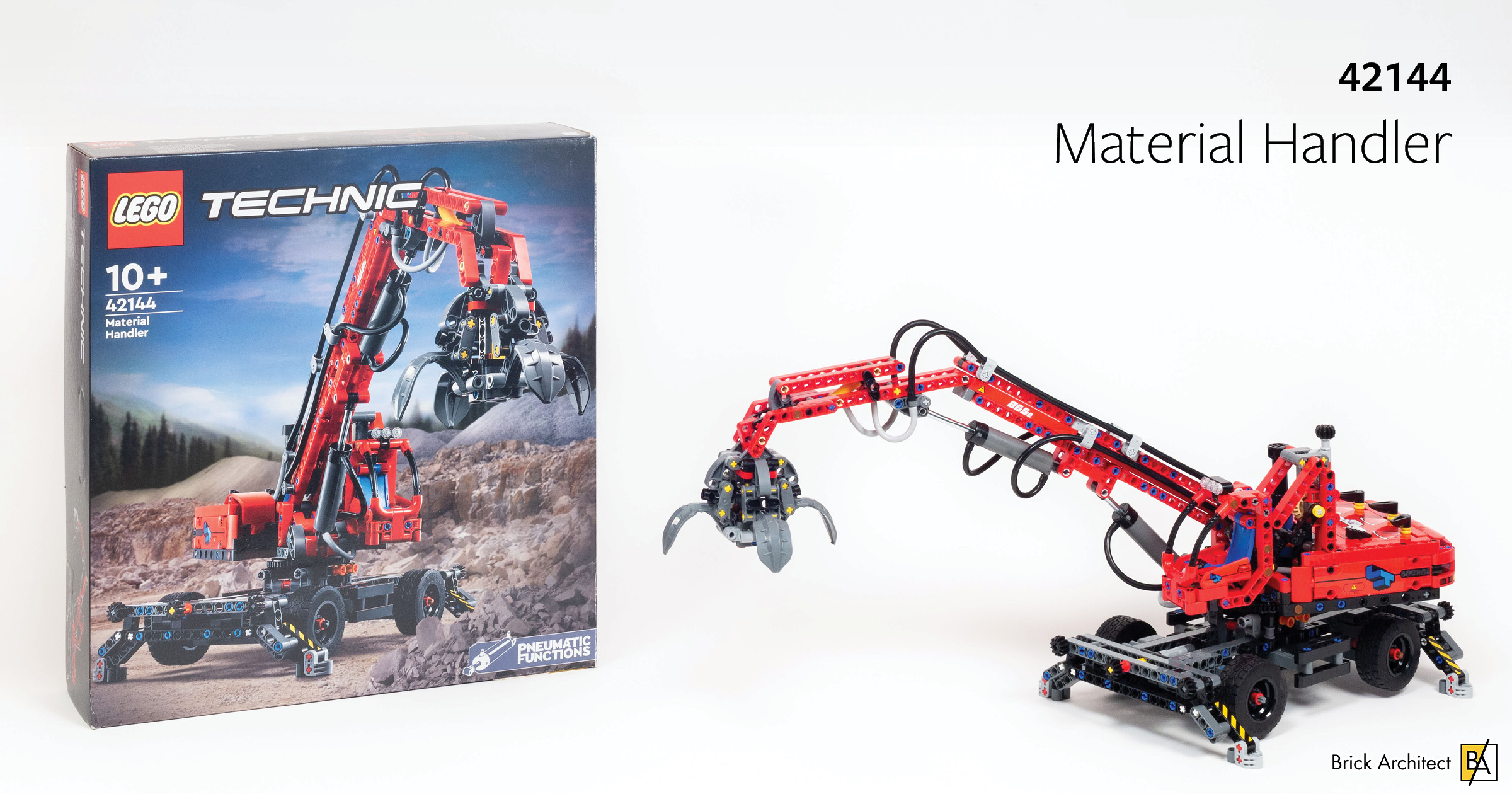

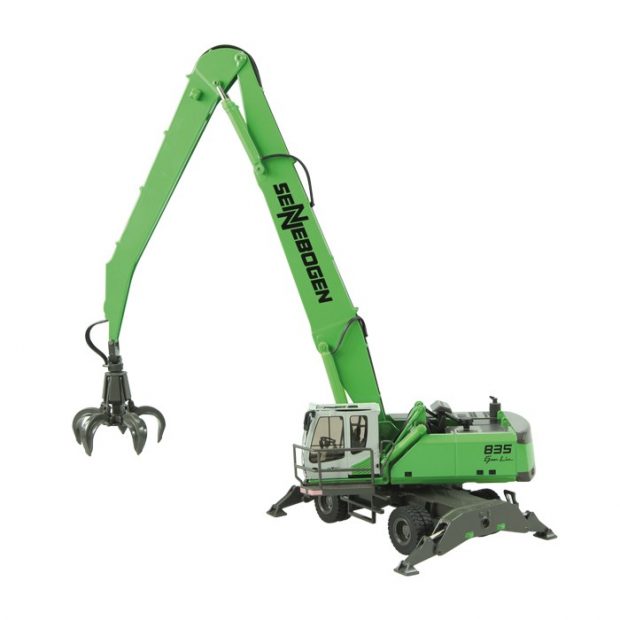
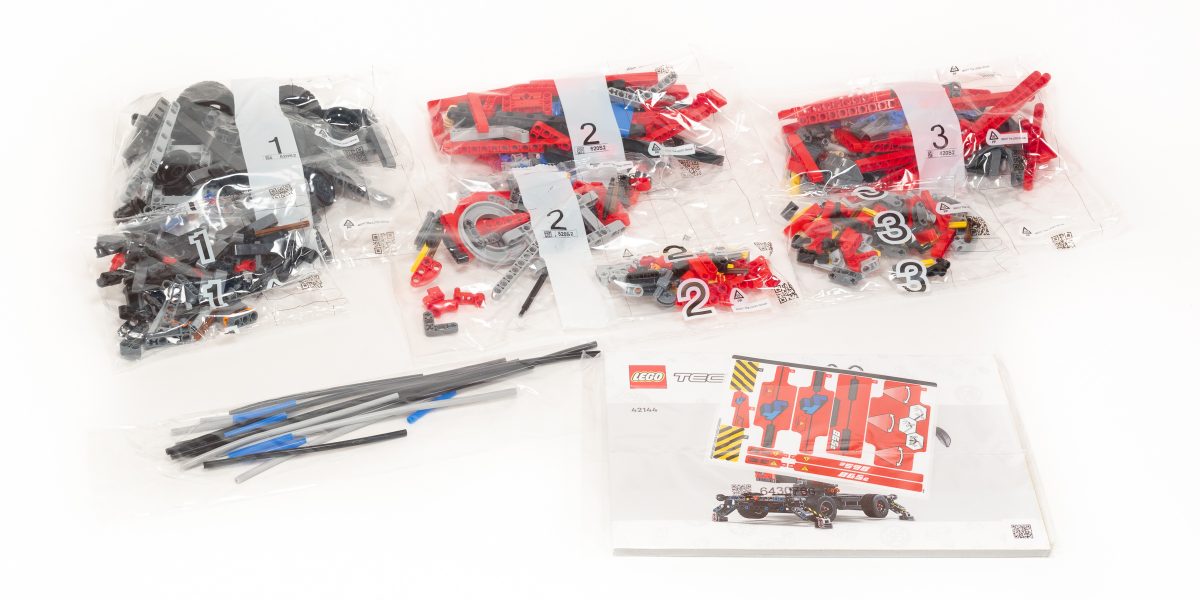
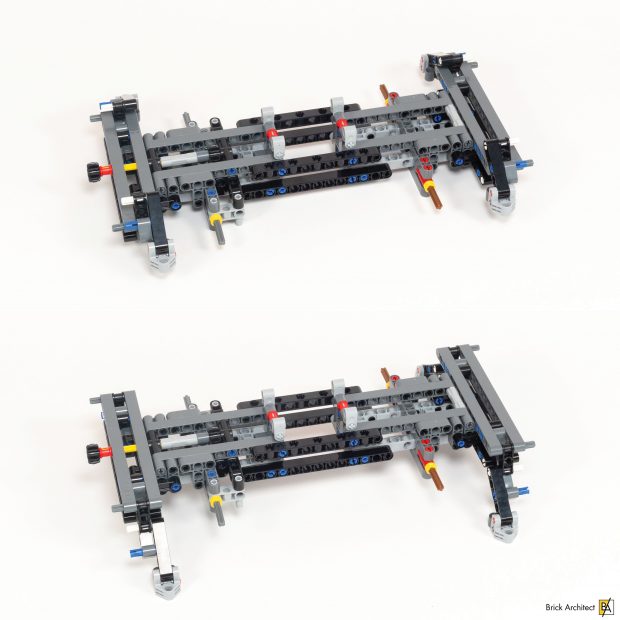
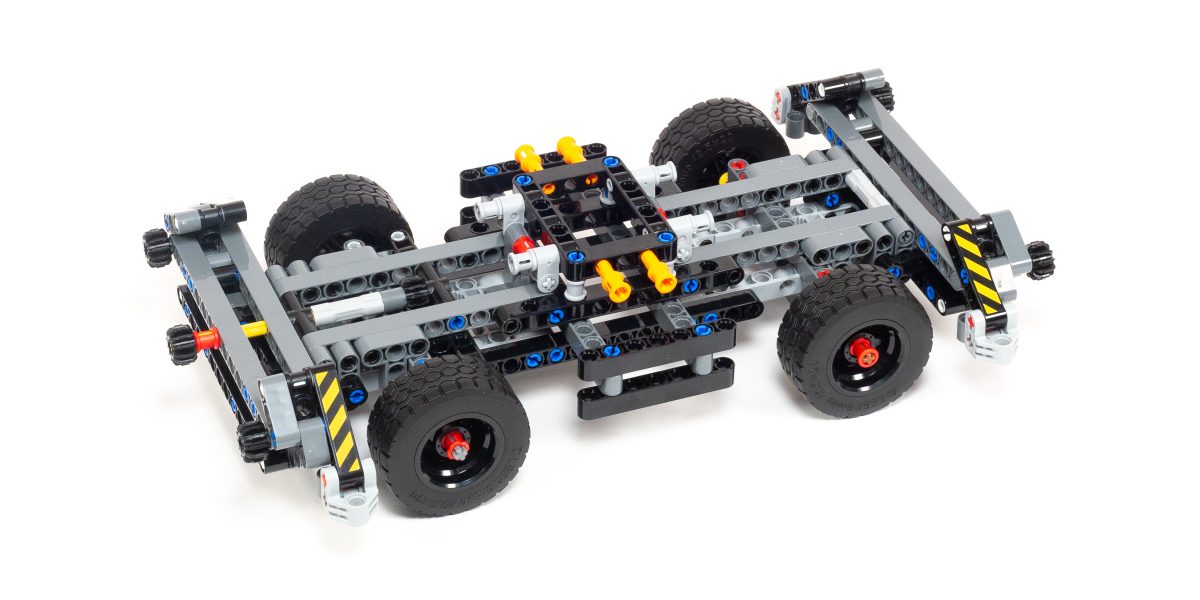

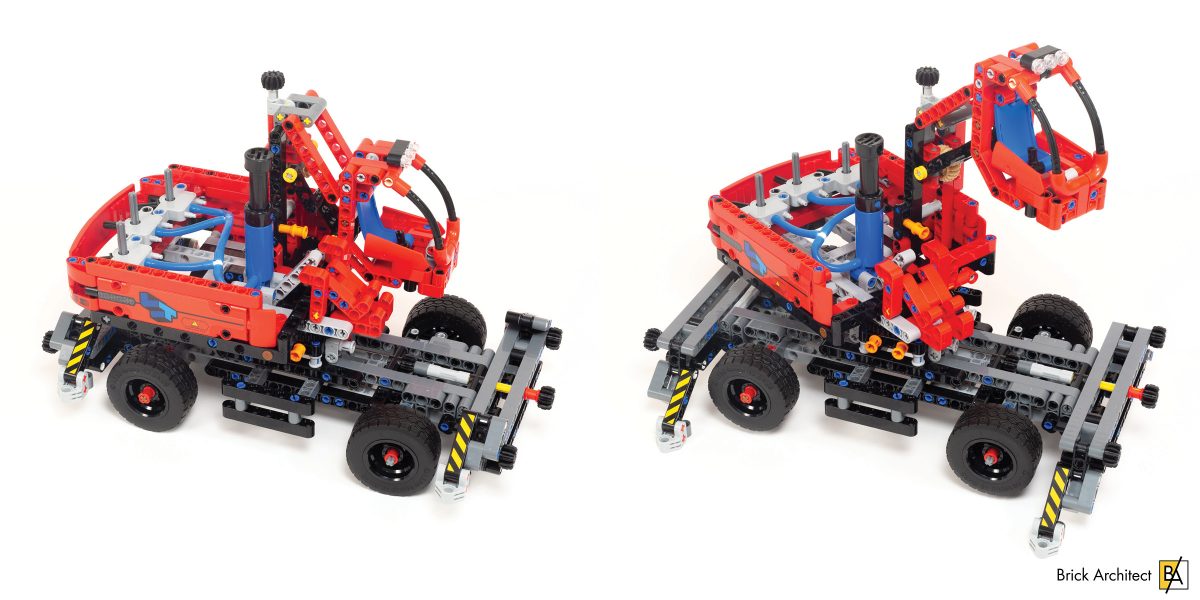
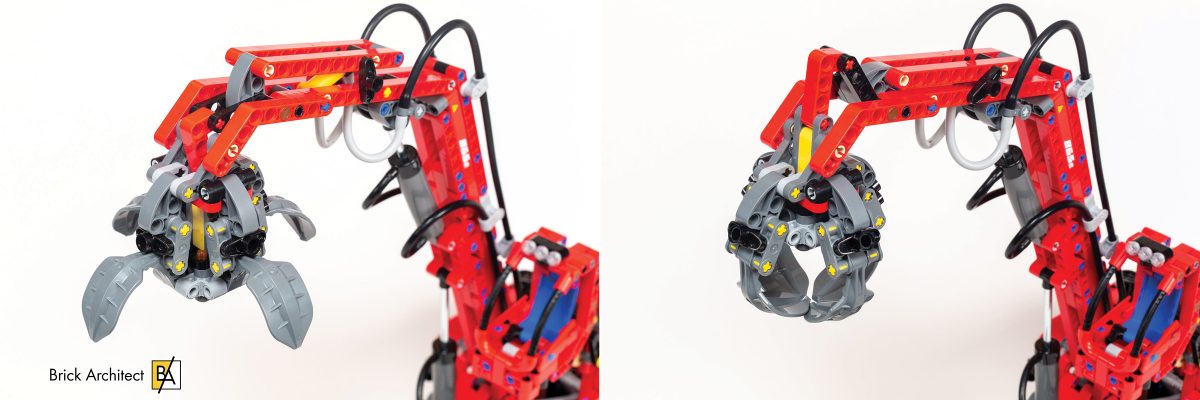

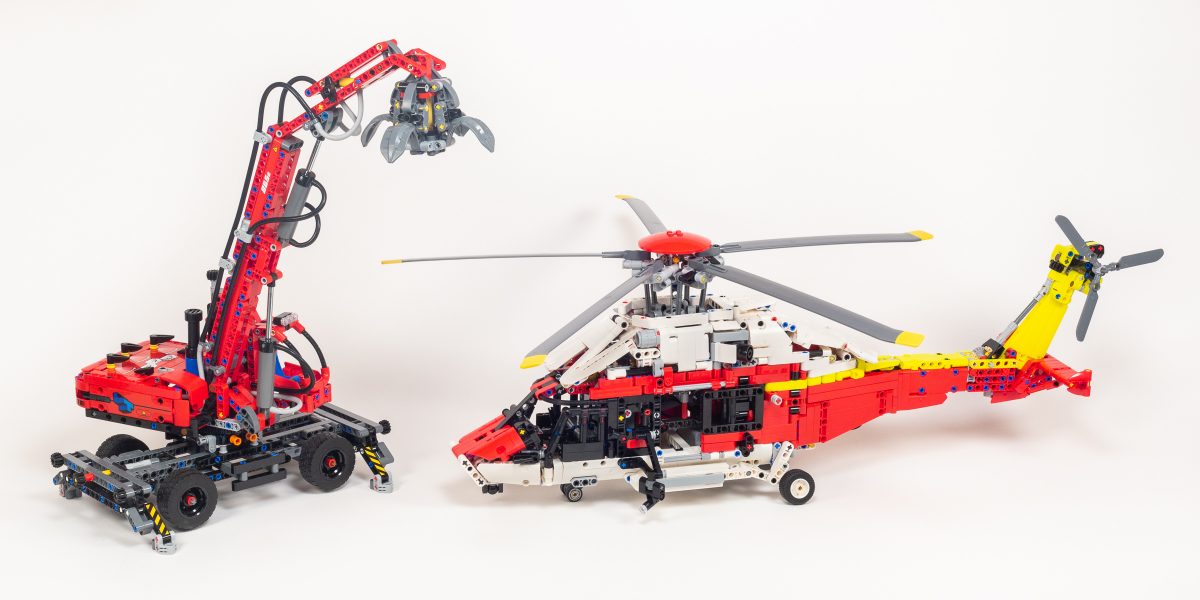
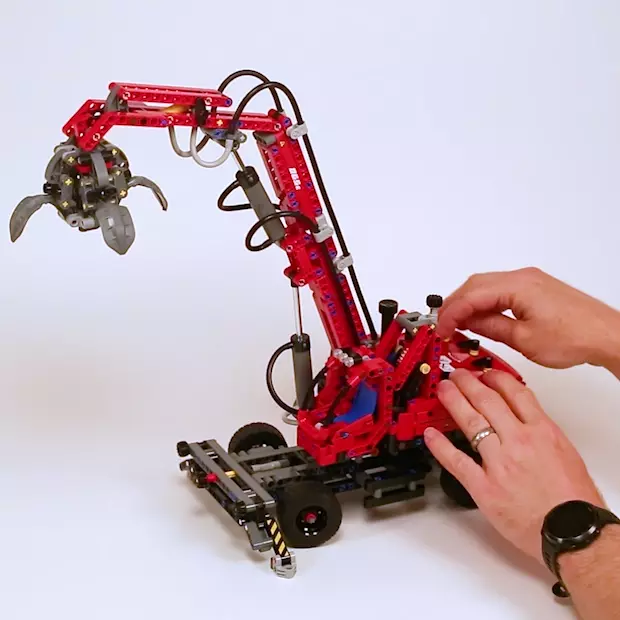
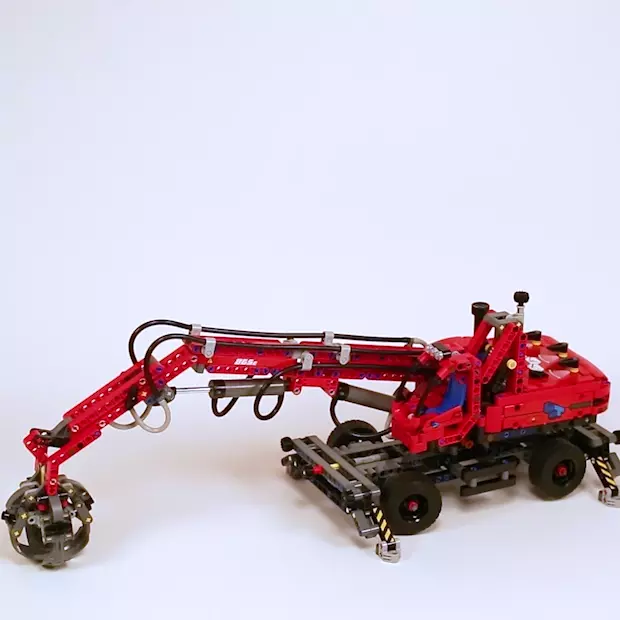
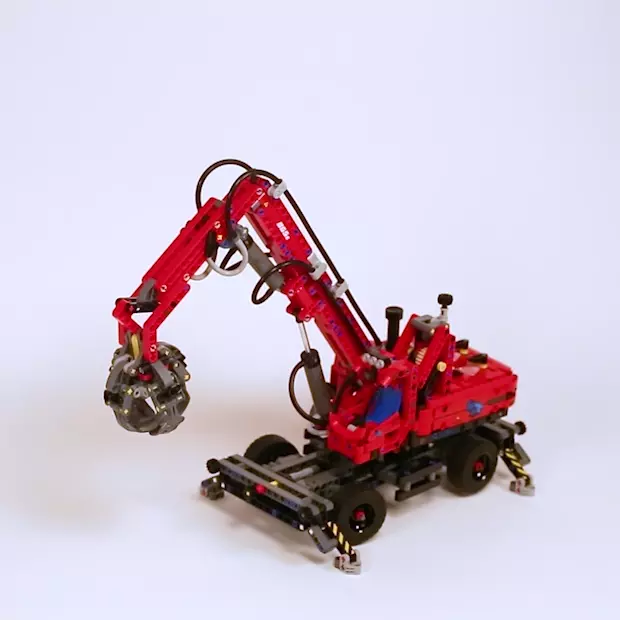
Hi Tom, after reading this installment of your newsletter I had to leave a comment. We first discovered Truck Tunes when my kids were around 7 and 3, and like you, at one point I could probably sing their entire catalog from memory. My kids are now 11 and 7 and yet we still often find ourselves singing/humming Truck Tunes—they’re just that catchy! The songs are actually done amazingly well.
Not sure if there’s such a thing as an AFOL who never builds, but that’s how I’d describe myself. As a wife & mom of school age kids, living in a small home with limited storage, I haven’t been able to carve out the time and space to really get into Lego for myself since exiting my “dark age” (basically my entire life up until 1-2 years ago). Anyway, I really enjoy reading your Lego writings & reviews, and now with your interview with one of the Truck Tunes creators, this unexpected convergence of two my family’s favorite things officially blew my mind
I was very excited about this set when it was first announced, but I was disappointed that it wouldn’t be the lime green that all the real-world material handlers I’ve seen are painted. When the price was revealed, I immediately recognized it as outrageous, even takitg the recent price increases into account. I definitely won’t be picking this set up (even though I desperately desire the pneumatic components!), and I’m glad to know I’m not the only one who’s shocked and disappointed by the price.
We definitely aim to review sets based on all merits, including part selection, build experience, play functions, and value. It is disappointing when an otherwise good set offers such a poor value, but I see it as one of my jobs as a reviewer to highlight which sets are worth your money, and which aren’t…
In this case of this set, you can always look for it on sale – about 100$ would be a good value for what you get in this set.
Sincerely,
—Tom